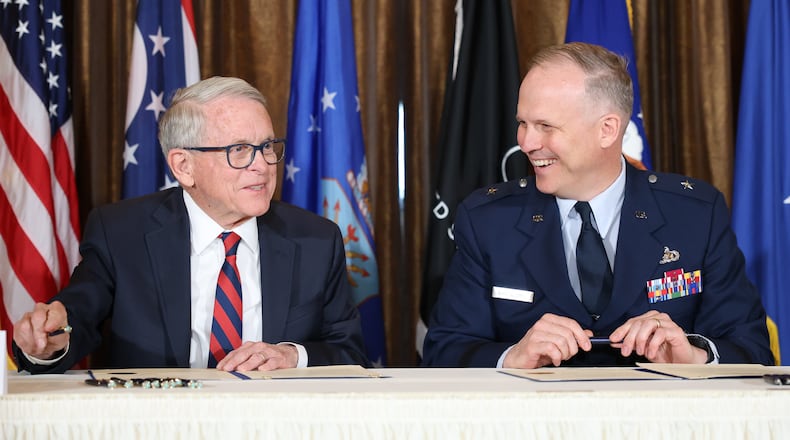DeWine’s office made the letter public Wednesday.
U.S. Rep. Mike Turner, a senior member of the House Armed Services Committee, and Ohio Sens. Bernie Moreno and Jon Husted have sent their own letters on the subject.
Turner first reached out to Meink in June, before Gen. Duke Z. Richardson, former AFMC commander, officially retired.
Richardson’s deputy, Lt. Gen. Linda Hurry, assumed the duties of AFMC commander on his retirement. Hurry holds a three-star rank.
Four-star general is the highest rank a commissioned officer can attain in the U.S. military. These officers oversee the most important commands and missions.
But arguing that the United States won World War II with only seven four-star general officers, Hegseth and his allies have sought to reduce the number of high-ranking flag officers in the military. In a May 5 memorandum to senior leadership, he called for a minimum 20% reduction of four-star positions across the active-duty ranks.
As recently as March, there were 38 active duty four-star positions in the U.S. military.
DeWine gently pushed back on that thinking in his July 7 letter, noting that AFMC was created from the combination of two “major four-star commands.”
“One of the great lessons of that conflict (World War II), was the creation in 1944 of Air Technical Services Command and Air Materiel Command, created to ensure the logistics and support of the vast Army Air Force armada and its technological superiority,” DeWine wrote. “By October of 1947, this task was so large that it was commanded by a four-star officer, and permanently a four-star responsibility by 1959.
“The breadth and complexity of our Air Force has grown exponentially since, as our nation focused on rapid research, development, test and complex lifetime logistical support of advanced aircraft, missile and spacecraft to defend our nation,” DeWine added.
A spokeswoman for the Department of the Air Force said senior leaders will respond directly to members of Congress on the subject.
About the Author

